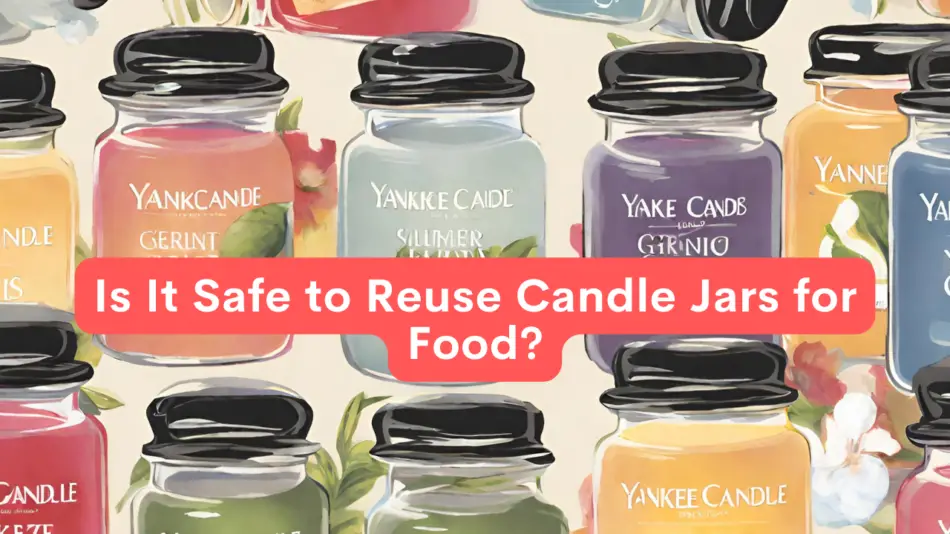
In the era of sustainability and eco-conscious living, repurposing household items is more than a trend; it’s a lifestyle. Among the myriad objects in our homes, candle jars stand out for their potential for reuse. But when it comes to using them for food storage, one crucial question arises: Is it safe to reuse candle jars for food? This in-depth article explores the safety, considerations, and best practices of repurposing candle jars for food storage, ensuring you can enjoy both your candles and your cuisine without worry.
Is it safe to reuse candle jars for food? Generally, it is safe to reuse glass candle jars for food storage if they have been thoroughly cleaned to remove all wax residue and fragrance, and if the glass is not cracked or damaged. However, ensure that the jar has not been treated with any chemicals that could be harmful if in contact with food.
Understanding the Basics of Candle Jar Safety
Candle jars, especially those from high-quality brands, are often made of glass or ceramic, materials that are inherently safe for food storage. However, the safety of reusing these jars for food depends on several factors, including the material of the jar, the type of wax used in the candle, and the cleaning process.
Material Matters: Glass and Ceramic
- Glass Jars: Most candle jars are made from glass, which is non-porous and generally safe for food storage once it’s thoroughly cleaned.
- Ceramic Jars: Some candles come in ceramic jars. Like glass, ceramic is safe for food storage if it’s glazed and fired at a high temperature. However, ensure the glaze used is lead-free to avoid contamination.
The Importance of Thorough Cleaning
Before reusing any candle jar for food, a thorough cleaning is essential to remove all traces of wax and fragrance. This process often involves freezing, heating, scraping, and washing with hot, soapy water. For an extra level of cleanliness, consider using a solution of vinegar and baking soda to neutralize any lingering scents.
Step-by-Step Guide to Preparing Candle Jars for Food Use
- Remove the Wax: Start by freezing the jar to make the wax brittle or warming it slightly to melt the wax. Remove as much as possible manually.
- Clean Thoroughly: Wash the jar with hot, soapy water, using a sponge to scrub away any residual wax or soot. For stubborn residues, a mixture of vinegar and baking soda can be effective.
- Sterilize: To ensure the jar is completely safe for food storage, sterilize it by boiling it in water for 10 minutes or placing it in a preheated oven at 225°F for 20 minutes.
Success Stories in Repurposing Candle Jars
Many have found innovative and safe ways to repurpose candle jars in their kitchens. From storing bulk spices to serving as an attractive container for homemade jams, the possibilities are endless. Share your personal success story or inspiration for turning an empty candle jar into a functional piece of your culinary toolkit.
FAQ: Reusing Candle Jars for Food
Is it safe to reuse candle jars for food if the candle contains essential oils?
Yes, as long as the jar is cleaned thoroughly to remove any residual oils and scents.
Can I use a dishwasher to clean candle jars for food storage?
While a dishwasher can help, manual cleaning is recommended to ensure all wax and fragrance residues are completely removed.
How can I remove a stubborn scent from a candle jar?
Soaking the jar in a mixture of vinegar and baking soda overnight can help neutralize stubborn odors.

Conclusion
Is it safe to reuse candle jars for food? The answer is a resounding yes, with the caveat of proper preparation and cleaning. By following the guidelines outlined in this article, you can safely repurpose those beautiful jars, contributing to a more sustainable lifestyle while adding a unique touch to your kitchen storage solutions. Reusing candle jars for food not only reduces waste but also provides a creative outlet for organizing and presenting your culinary creations. Embrace the journey of repurposing with safety and creativity at the forefront, and let your candle jars find new life in your kitchen.